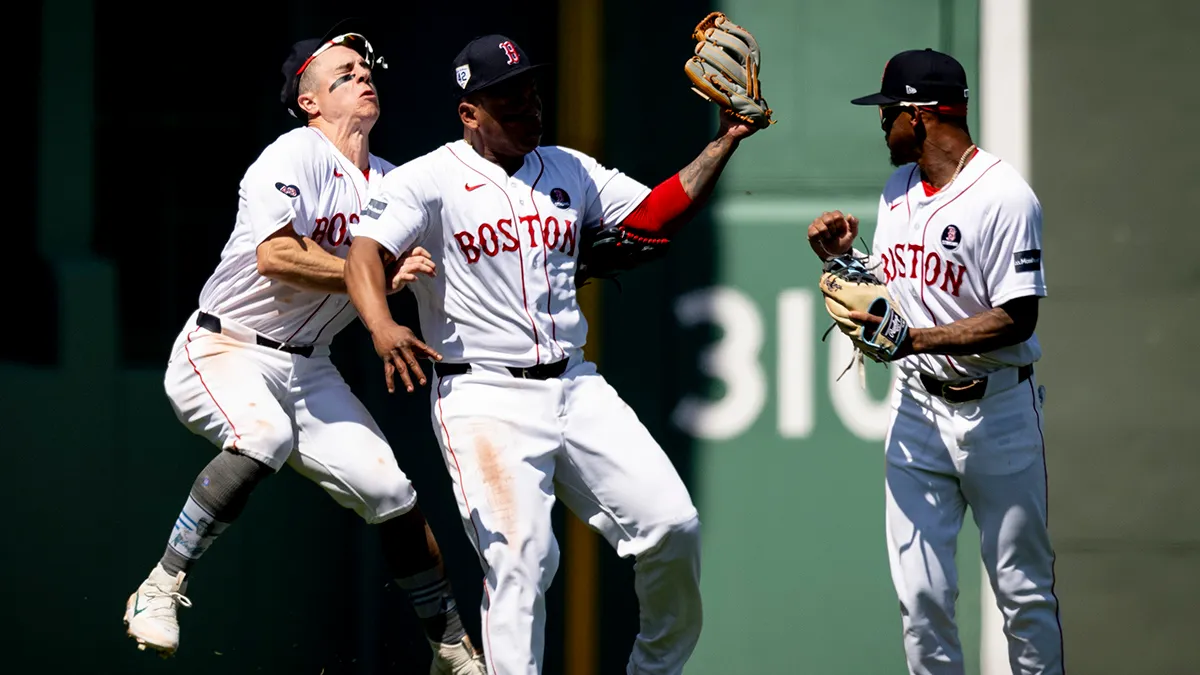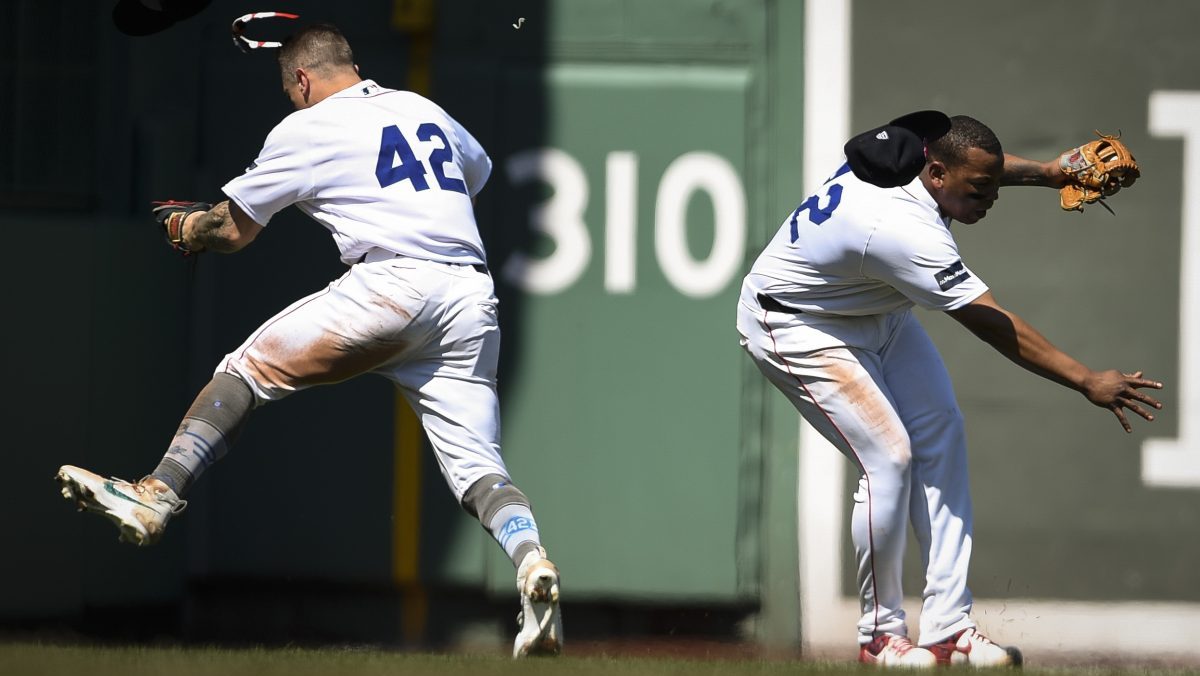Last we checked, Worcester is nowhere near the Pacific Coast.
You wouldn't know it from the way Polar Park has played this season.
The Triple-A Pacific Coast League may be renowned as a home run haven, but the home of the Worcester Red Sox is playing like a California launching pad this season.
Stay in the game with the latest updates on your beloved Boston sports teams! Sign up here for our All Access Daily newsletter.
With fans feeling justifiably excited over the hot start of prospect Jarren Duran, it's worth noting that he and the WooSox are doing almost all of their damage at home.
Worcester opened Polar Park with a four-homer barrage on May 11, and the balls haven't stopped leaving the yard since. Worcester owns 23 homers at home, the most in the Triple-A International League, versus just four on the road, which is second-lowest.
Tomase: Danny Santana looking like a steal for Red Sox
Since we're only talking about a sample size of 12 games, it's too soon to say this is anything more than random variance. But anecdotally, it's eye-catching.
Boston Red Sox
Just ask Red Sox infielder Christian Arroyo, a veteran of five big league seasons. He recently rehabbed in Worcester and couldn't believe how the park played.
"Dude, the ball flies," Arroyo said. "It's kind of crazy. There's like a jet stream out to right. I saw some homers where I was like, whoa. It was pretty incredible to see some of the balls that were hit."
The Red Sox are aware of the park's unique characteristics, but aren't making any rushes to judgment. Chief baseball officer Chaim Bloom noted that the organization will have a better idea of how the park plays once warm weather arrives for good.
"We've definitely seen days at Polar Park where the wind has played a role," he wrote in an e-mail. "Realistically, it's so early in the summer and in the life of the park that it's going to take a while before we know a lot about what that means for guys' numbers."
The home run disparity raises the question of how the Red Sox should evaluate their prospects, particularly left-handed ones like Duran, in a park where the ball flies out consistently to right and right-center.
Duran, for instance, is hitting .286 with six homers, 11 RBIs and a 1.110 OPS in 12 games at home, vs. .261-1-1-.737 on the road. The right-handed Downs, meanwhile, is hitting .300 with three homers at home and .161 with no homers on the road.
In particular, Arroyo was wowed by a 475-foot Duran blast to right on a breaking ball that he watched from the on-deck circle.
"That might be one of the furthest hit balls I've ever seen hit in person," he said. "Jeter (Downs) hit a home run one of the games to right center, just like flicked the wrist, and I'm like jeezum crow, this place flies."
It's not as if Polar Park is a bandbox. It's 329 feet to left, 391 to left center, 402 to center, 370 to right-center, and 320 to right, which features its own version of the Green Monster, called the Worcester Wall, that stands 22 feet tall.
If the park plays small anywhere, it's to right field, which helps explain why 12 of the team's 23 homers have come from left-handed hitters, including three by switch hitters Danny Santana and Jonathan Arauz. Of course, Duran hasn't needed a short porch for most of his blasts -- he already owns homers of 440, 475, and 480 feet.
"It's not a knock on them, those guys can hit, they've got some juice in there," Arroyo said. "But I'm also looking at it where I'm seeing guys hitting pop-ups to right and all of a sudden the guy's at the track and he's catching the ball at the track. I had one of those, I hit like a pop-up to left and I was like, that ball's still going."
Complicating matters is that opponents have only hit 13 homers in Polar Park, a middle-of-the-pack total that leaves the ballpark ranking third in the IL in home runs this season at 36, behind the 39 each hit out of Charlotte and Syracuse.
Still, as Red Sox fans clamor for Duran's arrival, it's worth noting that his prodigious early power might have something to do with his brand new home park. Either way, the Red Sox are more interested in outcomes that are independent of park, such as quality of contact and the way he controls the strike zone.
"In any environment, we work to evaluate players on the things they can control," Bloom wrote. "A pitcher can control where he throws a pitch, and how it moves, but he can't control what the umpire or the hitter does with it. A hitter can control where and how hard he hits the ball, but he can't control what the elements or the defense do once he hits it. What players can control is what's more important to us in evaluating them, even if it's not always the same as what shows up on the back of their baseball cards."


